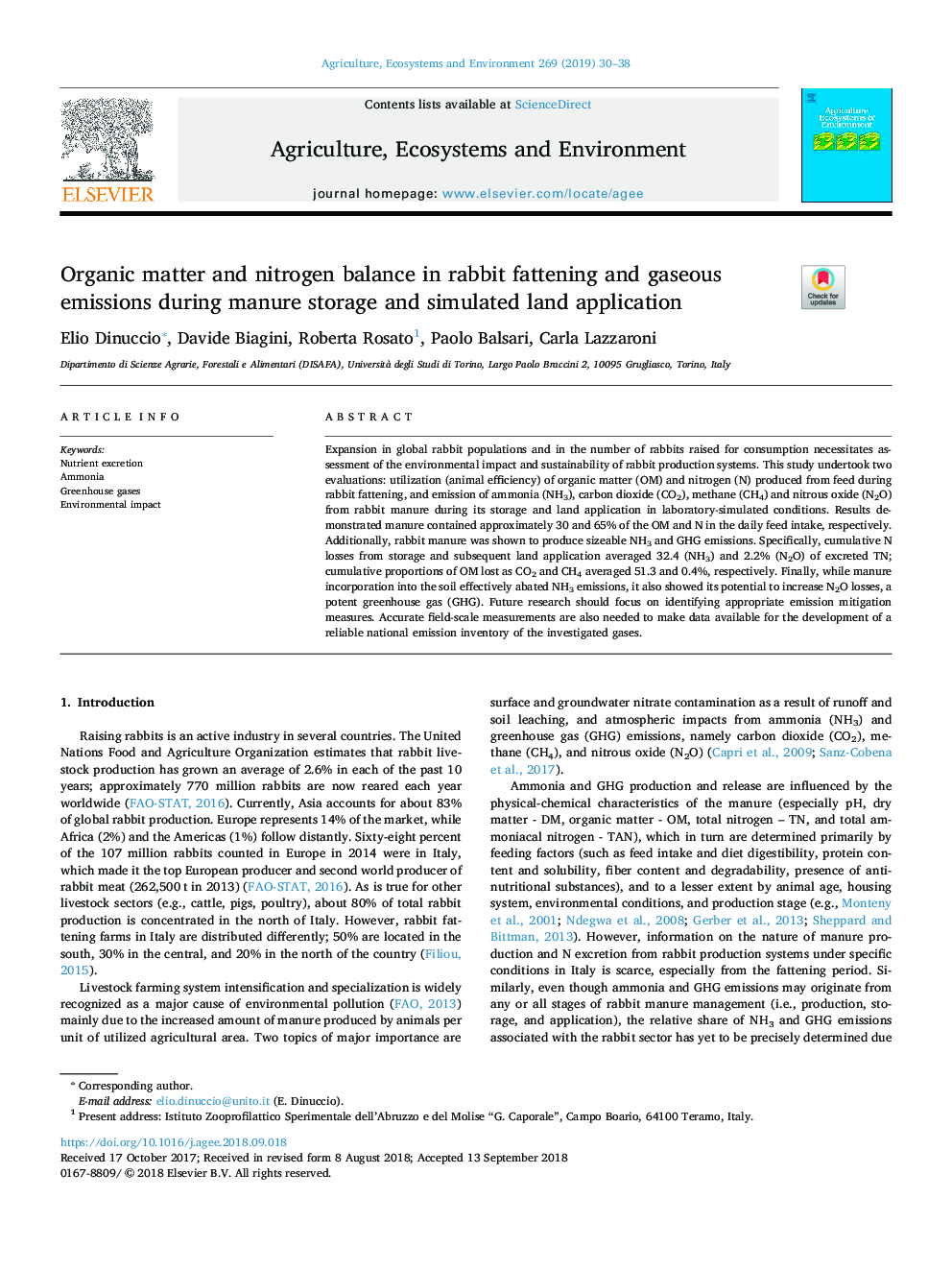| Article ID | Journal | Published Year | Pages | File Type |
|---|---|---|---|---|
| 10158000 | Agriculture, Ecosystems & Environment | 2019 | 9 Pages |
Abstract
Expansion in global rabbit populations and in the number of rabbits raised for consumption necessitates assessment of the environmental impact and sustainability of rabbit production systems. This study undertook two evaluations: utilization (animal efficiency) of organic matter (OM) and nitrogen (N) produced from feed during rabbit fattening, and emission of ammonia (NH3), carbon dioxide (CO2), methane (CH4) and nitrous oxide (N2O) from rabbit manure during its storage and land application in laboratory-simulated conditions. Results demonstrated manure contained approximately 30 and 65% of the OM and N in the daily feed intake, respectively. Additionally, rabbit manure was shown to produce sizeable NH3 and GHG emissions. Specifically, cumulative N losses from storage and subsequent land application averaged 32.4 (NH3) and 2.2% (N2O) of excreted TN; cumulative proportions of OM lost as CO2 and CH4 averaged 51.3 and 0.4%, respectively. Finally, while manure incorporation into the soil effectively abated NH3 emissions, it also showed its potential to increase N2O losses, a potent greenhouse gas (GHG). Future research should focus on identifying appropriate emission mitigation measures. Accurate field-scale measurements are also needed to make data available for the development of a reliable national emission inventory of the investigated gases.
Related Topics
Life Sciences
Agricultural and Biological Sciences
Agronomy and Crop Science
Authors
Elio Dinuccio, Davide Biagini, Roberta Rosato, Paolo Balsari, Carla Lazzaroni,
